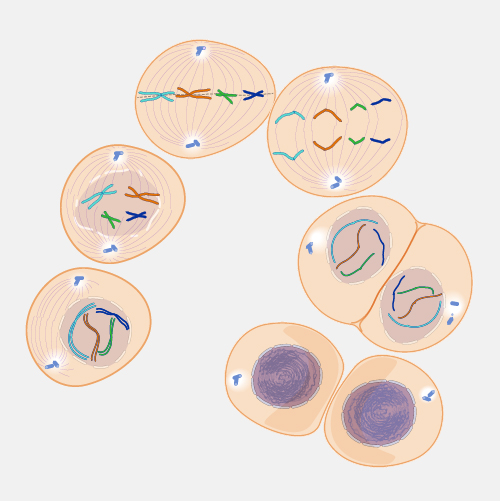Stem Cell
Definition
A stem cell is a cell with the potential to form many of the different cell types found in the body. When stem cells divide, they can form more stem cells or other cells that perform specialized functions. Embryonic stem cells have the potential to form a complete individual, whereas adult stem cells can only form certain types of specialized cells. Stem cells continue to divide as long as the individual remains alive.
Narration
A stem cell is a specific type of cell in the body that has the potential to form many different cell types. So stem cells generally are undifferentiated, and then the kind of cells that they make would become the more mature cells that you're familiar with. So generally, if you think about it, stem cell is the top brick in a big pyramid, and at the base of the pyramid are maybe four different kinds of cells that are derived from that stem cell. And you can see that not only do they mature as they head down the pyramid, but they get greater in number. So a very small number of stem cells can give rise to an enormous number of mature progeny. Now, there are several different kinds of stem cells. There are somatic stem cells. These are the ones that live in the adult organism. And people have stem cells in their bone marrow that give rise to all the different kinds of blood that they have. There are stem cells in the liver that give rise to hepatocytes and secretory cells. There are stem cells in neural tissue that give rise to neurons and astroglial cells and things like that. And muscle has stem cells. And there are many different kinds of stem cells that have been identified in adults. There are also embryonic stem cells, and these are derived from three and a half days in the mouse and about six- to eight-day embryos in people, and these are cells with even more potential than the adult cells, because an embryonic stem cell derived in the proper way can give rise to neural cells, muscle cells, and liver cells. And these are the three different general parts of an organism that happens during its development. So the very important thing to remember about stem cells is they need not only divide and proliferate to make these many, many mature progeny cells, they also need to assure that their own stem cell pool is not reduced. So it's kind of like if you're getting three wishes, your last wish should be for more wishes. So what stem cells do is they have two different kinds of divisions they can make. They can make what's called a symmetric division, where the stem cell divides and both cells stay undifferentiated in stem cells. Or they can make asymmetric division, in which one cell goes on to proliferate and differentiate into the progeny, and the other cell stays a stem cell. So in periods like after a bone marrow transplant, where the stem cell number has to expand, they make many more symmetric than asymmetric divisions. But in the regular time in your bone marrow, the stem cells make mostly asymmetric divisions, which keep the number of stem cells pretty standard.


